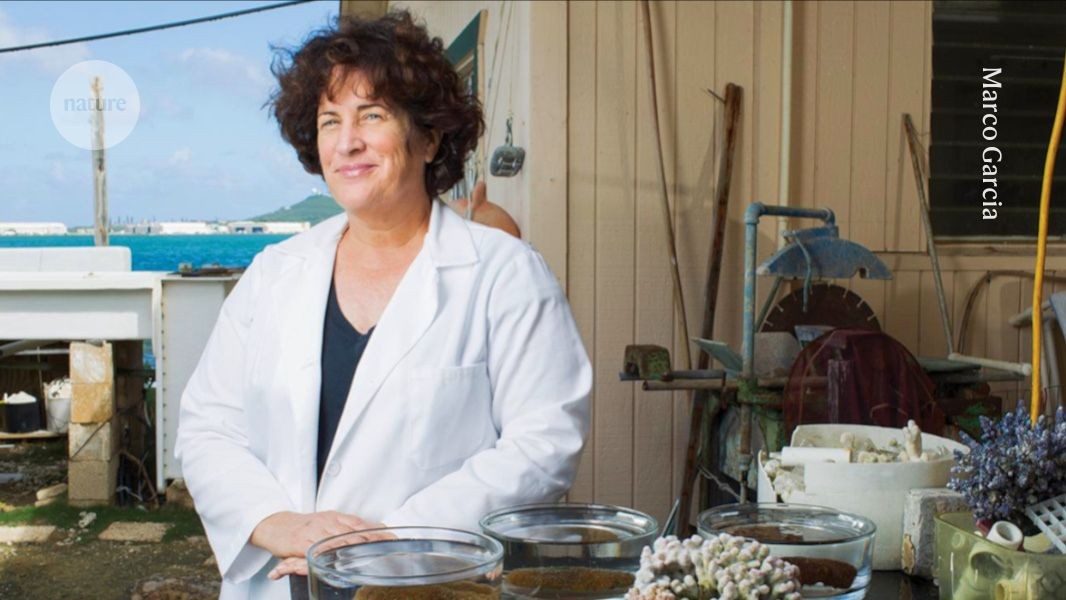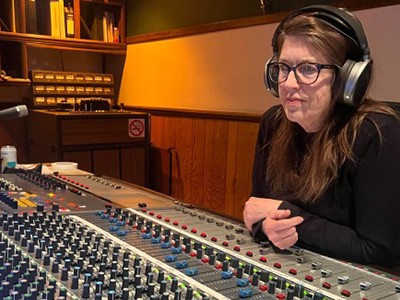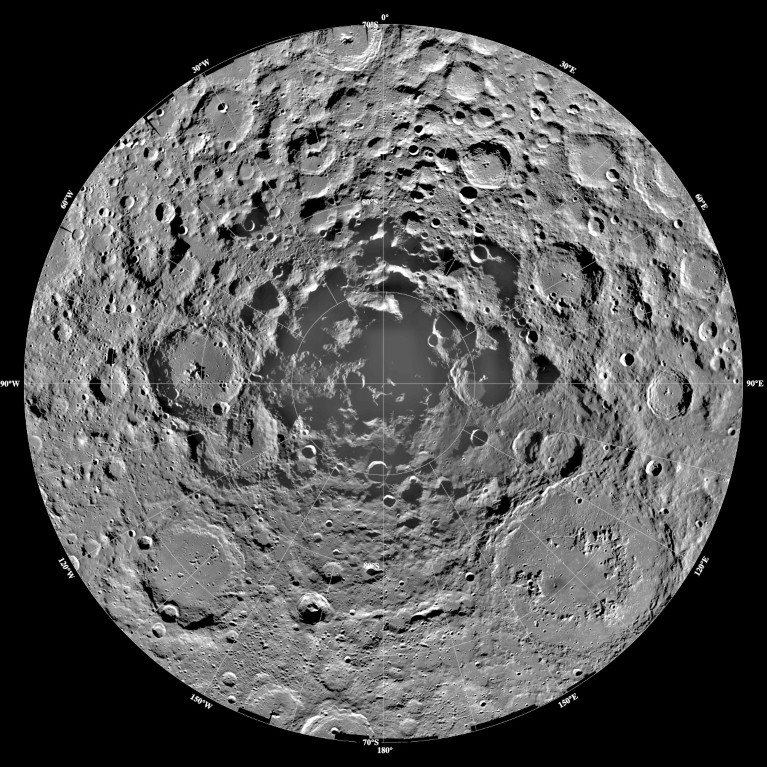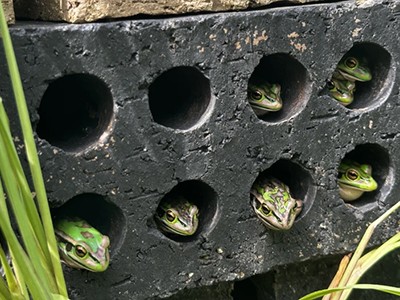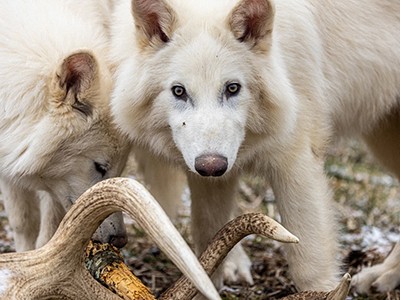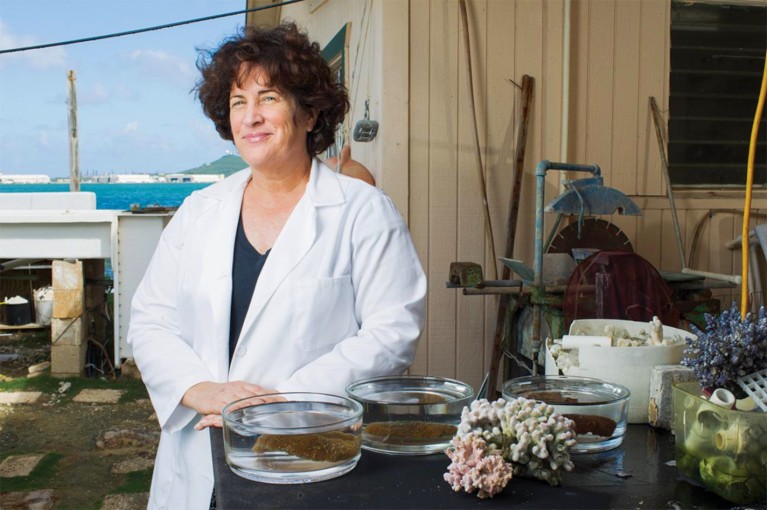
Mary Hagedorn, who studies cryopreservation of corals, wants to put a biobank on the Moon.Credit: Marco Garcia
Mary Hagedorn has spent decades studying coral reproduction as part of an effort to save reefs from being destroyed by rapidly warming oceans. To collect precious fragments of new coral life, she must carefully synchronize her activities to the Moon’s phases.
Corals breed at or near a full moon, releasing a blizzard of sperm and eggs into shimmering waters, but the unpredictability of which full moon corals choose makes fieldwork a gamble. On one trip “we dove for 60 nights straight” before capturing the magic moment, Hagedorn says.
The patience and persistence required to collect coral sperm, cryopreserve it, transport it to the laboratory for rearing coral larvae and then releasing them into the ocean could serve her well for another planned mission: a literal moonshot to preserve threatened organisms.
Working Scientist career profiles
Hagedorn, a research scientist at the Smithsonian Conservation Biology Institute in Kāne‘ohe, Hawaii, is part of an interdisciplinary team proposing to build a frozen repository in a permanently shadowed polar area on the far side of the Moon. Initially, the effort would focus on cryopreserving a veritable Noah’s ark of Earth’s animal life. It would start by banking tissue samples from endangered and threatened animals, as well as from priority species. These would include pollinators and ecosystem engineers such as beavers, that, through dam-building, create whole systems of aquatic environments for other organisms. Hagedorn and ten collaborators published the lunar biorepository idea in 2024 in the journal BioScience as a backup plan for biodiversity — a way to introduce life back to Earth, or to other planets, in the event of catastrophic loss (M. Hagedorn et al. BioScience 74, 561–566; 2024).
She likens the planned repository to the Svalbard Global Seed Vault in Arctic Norway, which stores seeds of genetic importance for food, agriculture and biodiversity in a rocky cavern deep under an icy mountain held at −18 °C. It’s an ambitious idea that faces many challenges, including a political climate in which science in the United States and beyond is being undermined and underfunded, especially when related to the impacts of climate change. Nevertheless, the lunar biorepository idea is gaining traction and being given serious consideration.
“We wanted something that could act like Svalbard,” but there’s no place on Earth that is naturally cold enough, says Hagedorn. Even Svalbard needs refrigeration to keep its samples frozen. In 2016, extraordinarily warm winter temperatures sent a flood of melt water into the vault’s entrance. It was a wake-up call for a facility thought to be a fail-safe because it is surrounded by permafrost.
Thinking big, and extraterrestrially, Hagedorn reasoned that the lunar south pole is spared the vagaries of climate and temperature (see ‘Quick-fire Q&A’). Being stored under the Moon’s surface, also protects the samples from another damaging factor: radiation. Another advantage is the Moon’s lack (so far) of war, violence, natural disasters, overpopulation and resource depletion. Samples could be stored and retrieved using robots similar to the Mars rovers.
Addressing criticism that retrieving samples could be challenging, Hagedorn responds that, barring an apocalypse, “we will be travelling into space regularly in the future”.
Location, location, location
One favoured site for a lunar bio-repository lies in a crater some 6 kilometres deep, “way deeper than the Grand Canyon” in Arizona, Hagedorn says. In this permanently shadowed space, the temperature is stable — at or below −196 °C.
Protecting Earth’s life must be a top priority in the rush to stake out lunar sites for industry and research, argue Hagedorn and her co-authors, whose expertise encompasses cryobiology, medicine, engineering, atmospheric research, coral and fish biology, and law and policy. They issued an open call for others to collaborate on this ambitious, decades-long programme.
The process would start by banking skin samples that contain fibroblast cells. Those fibroblasts are isolated from a cell-culture process, and then cryopreserved. They can later be thawed and transformed into sperm and egg cells from the specific species. Eventually, whole organisms could be reintroduced into their natural habitat.
A sit in the sauna can save endangered frogs
As proof of concept, the team will test one species on the International Space Station. The researchers plan to cryopreserve pelvic fins from a coral-reef dwelling fish aptly named the starry goby (Asterropteryx semipunctata), and test them in space for sensitivity to radiation and microgravity. They will also refine the optimal storage materials for cryopreserved cells and study how frozen storage in space affects DNA and the ability to derive and culture cells from thawed fin samples.
Once the team works out the kinks for starry gobies, it wants to expand to other species. There are plans to collaborate with continental-scale sampling already being undertaken by entities such as the National Ecological Observatory Network, which is funded by the US National Science Foundation (NSF) and collects 100,000 biological samples annually from freshwater and terrestrial habitats.
Cryobiology, corals and lunar missions were not always Hagedorn’s focus. After earning a PhD in marine biology at the Scripps Institute of Oceanography in La Jolla, California, in 1983, Hagedorn next studied the physiology of electric fishes and a cichlid fish (Astatotilapia burtoni) as a postdoctoral fellow. That research abruptly ended after a boating accident in the Peruvian Amazon claimed the lives of two colleagues. Hagedorn could not bring herself to go back, but realized she wanted to work on the impacts of warming oceans, which led her to bleached and dying coral — the ocean’s canary in the coal mine.
An article by Canadian molecular physiologist Ken Storey, on the ability of tree frogs to freeze solid in winter and thaw again in spring (K. B. Storey and J. M. Storey Sci. Am. 263, 92–97; 1990), sparked the idea of using cryobiology for ocean conservation work. “Nothing had been done at the time with cryo-preservation of corals,” says Hagedorn. She received a mid-career fellowship at the Smithsonian Institution in Washington DC in 1996 to start work on fish-embryo cryopreservation. In 2004, she transferred her lab group to Hawaii, expanding the scope of her work to include developing techniques for coral cryopreservation.
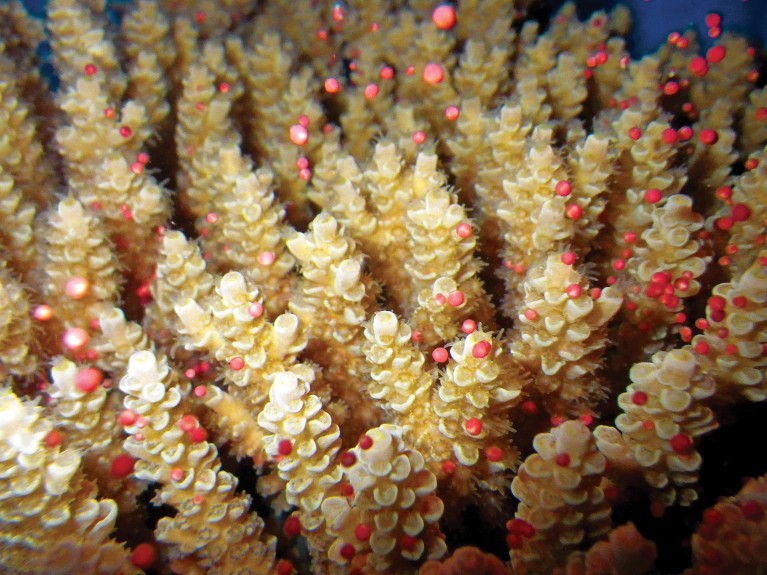
The lunar biobank could start with tissue samples from corals and other endangered species.Credit: Andrew Heyward, AIMS
Mehmet Toner, a biomedical engineer at Harvard University in Cambridge, Massachusetts, who has known Hagedorn for more than 30 years, says: “I don’t think there’s anyone else in the world who knows coral biology and cryobiology like her.”
Toner, Hagedorn and their colleagues are funded by the NSF as part of the ATP-Bio programme, which brings together partners from industry, academia, the non-profit sector and government to investigate how to cryo-preserve and store samples ranging from cells to whole organisms.
Toner’s cryobiology research includes work to understand how to freeze and thaw cells without damaging them. “When I learned about the southern lunar pole being in cryogenic temperatures, it sparked my interest,” says Toner, a co-author of the lunar biorepository proposal.
Moonstruck collaborators
The cryobiology involved in preserving life across a spectrum of biodiversity is extremely complex, he explains. “You’re taking a living thing to −196 °C and bringing it back” to the temperature of its habitat, alive. “I call that a miracle.” At the same time, he notes that cryobiology techniques have advanced significantly in the past 20–30 years. “It’s much more predictable and doable now,” he says.
Toner notes that their team is not the only one vying for lunar real estate. “That part of the Moon is becoming very popular,” with scientists also proposing polar craters as sites for mines, telescopes and temporary human habitation. Indeed, NASA’s Artemis programme, which aims to land humans on the Moon again, is encouraging the exploration of lunar resources.
John Bischof, a bioengineer at the University of Minnesota in Minneapolis and the director of ATP-Bio, notes Hagedorn’s talent for identifying scientists to join their team. “She’ll bring you into the collaboration, show you exactly where you can make the contribution, and explain why it’s so important. So, even before you do anything, you’re just so pumped up,” he says, describing her as enthusiastic and empathetic. “It’s fun to be around somebody like Mary,” says Bischof, describing her as “untethered in a good way”.
This company claimed to ‘de-extinct’ dire wolves. Then the fighting started
Claire Lager, Hagedorn’s lab manager since 2016, and once her graduate student, notes that “somebody who wants to put things on the Moon has to be optimistic, enthusiastic and very, very charismatic”, and that Hagedorn ticks all the boxes.


